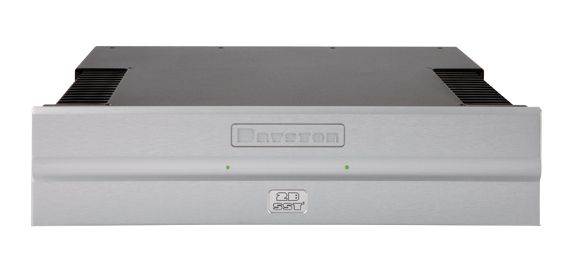Bryston 2b Sst2 (£3380)

Based a couple of hours’ drive north-east of Toronto, Bryston builds its audio components fully in-house. Next year will see the company celebrate 50 years since its initial foundation as a manufacturer of blood analysis equipment. It made its first amplifier in 1973 and progressed into the audio business soon thereafter.
Luton’s Professional Monitor Company (PMC loudspeakers) has been Bryston’s UK distributor since the early 1990s – and naturally it’s Bryston amplifier modules that power PMC active monitors. There are parallels with Gloucestershire’s ATC in that Bryston populates its PCBs entirely by hand, eschewing flow solder machines as it believes they instigate ‘heat shock’, risking future reliability problems. If your products are to be used 24/7 in recording studios ruggedness and reliability are paramount.
Although the smallest of Bryston’s C-Series amplifiers, this 2B SST2 is still quite a brute. Costly, too. Its Class A/B dual-mono construction sees two entirely separate power supplies with a toroidal transformer and multiple filter capacitors dedicated to each channel.
TOTAL CONTROL
While bass performance falls a little short of the gut-plumbing depths served up by Bryston’s bigger 4B SST2 tested in 2009, this 2B still packs a weighty punch. Bryston’s DNA was self-evident by the manner in which the 2B SST2 remained poised and understated, allowing unambiguous differentiation between kick-drum and bass guitar within the brooding, murky soundscape of Robert Plant’s ‘Silver Rider’. Similarly the song by Maxwell was reproduced with supreme confidence and crisp transient attack. Bass was powerful and seemingly solid as concrete, while percussive treble detail sounded clear and silky.
Not quite as sweet, airy and three-dimensional sounding as the Parasound, or as obviously forceful as the giant Anthem in our group, it nevertheless delivered a determined and spirited performance of Wagner’s ‘Ride Of The Valkyries’, tracking the varying dynamics of the Los Angeles orchestra with consummate ease. Compared with the best in the group it lacked some sparkle, however, and the surreal commotion of the swirling string section was short of drama. This cool understatement was evident in the rendition of Mozart’s violin concerto as well. The string sounds certainly never grated – the sound was lucid and beautifully refined – but the animated vivacity of the ensemble’s playing seemed muted.
Originally published in the November 2011 issue
























































